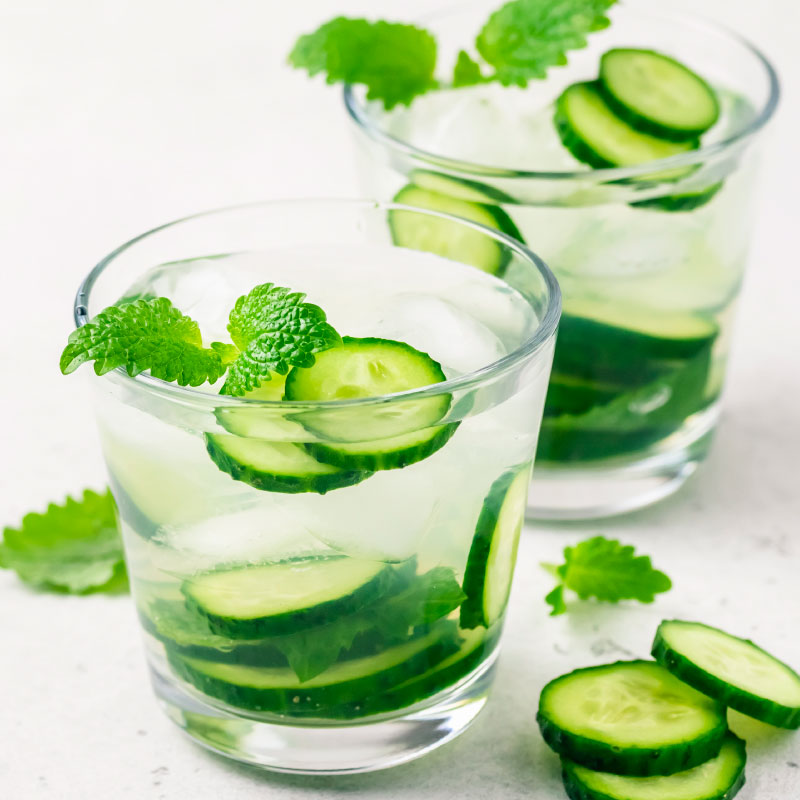This Dr. Axe content is medically reviewed or fact checked to ensure factually accurate information.
With strict editorial sourcing guidelines, we only link to academic research institutions, reputable media sites and, when research is available, medically peer-reviewed studies. Note that the numbers in parentheses (1, 2, etc.) are clickable links to these studies.
The information in our articles is NOT intended to replace a one-on-one relationship with a qualified health care professional and is not intended as medical advice.
This article is based on scientific evidence, written by experts and fact checked by our trained editorial staff. Note that the numbers in parentheses (1, 2, etc.) are clickable links to medically peer-reviewed studies.
Our team includes licensed nutritionists and dietitians, certified health education specialists, as well as certified strength and conditioning specialists, personal trainers and corrective exercise specialists. Our team aims to be not only thorough with its research, but also objective and unbiased.
The information in our articles is NOT intended to replace a one-on-one relationship with a qualified health care professional and is not intended as medical advice.
Pawpaw Fruit: 8 Reasons to Add This Antioxidant Powerhouse to Your Diet
August 28, 2023

Although it’s been cultivated in North America for centuries, few people have heard of the pawpaw fruit, let alone ever tried it. However, there are plenty of reasons that this unique fruit definitely deserves a spot on your next shopping list.
Not only is it packed with nutrients, but it also boasts a creamy texture and sweet flavor that is described as a mix of pineapple, banana and mango. Plus, pawpaws may even come with some serious health benefits — similar to the benefits of pineapple — and could help protect against bone loss, anemia, high blood sugar levels and more.
Ready to learn more? Keep reading for more pawpaw tree facts, plus some tasty ways to add this unique ingredient to your diet.
What Is Pawpaw Fruit?
Pawpaws, also known as paw paw fruit or Asimina triloba, are considered the largest edible fruit native to North America. Measuring up to six inches long with large, black or brown seeds and soft, pale yellow flesh, the fruit has a sweet flavor that is often compared to pineapple, mango, banana or cantaloupe.
So where do pawpaw trees grow?
Pawpaw trees are commonly found throughout the eastern United States and Canada. However, you can also find them in many other areas, including the South and Midwest.
The fruits were originally cultivated by several tribes of Native Americans. Although few people today have never even heard of pawpaws, they were actually believed to have been a favorite dessert of George Washington at one point.
Because of their soft texture and sweet flavor, they are often enjoyed raw or chilled. They are also added to many dessert recipes and can be used to make ice cream, sorbet or jam.
Keep in mind that, although the terms pawpaw and papaya are often used interchangeably, the two are actually unrelated. Unlike the pawpaw fruit, papayas are a tropical fruit that are thought to originate in southern Mexico and Central America.
Related: Cherimoya Fruit for Digestion, Eye Health & More
Types/Varieties
There are several specific cultivars of the pawpaw tree, each of which offers its own distinct flavor, texture and appearance.
Here are a few of the most common pawpaw varieties:
- Taylor
- Sunflower
- Shenandoah
- Rebecca’s Gold
- Davis
- Rappahannock
- Mitchel
- Mary Foos Johnson
- Susquehanna
Nutrition Facts
Pawpaw fruit is a great source of several important nutrients, including manganese, copper, iron and magnesium.
A 3.5-ounce serving of pawpaw fruit (approximately 100 grams) contains about:
- Calories: 80
- Total Carbohydrates: 18.8 g
- Fiber: 2.6 g
- Total Fat: 1.2 g
- Saturated Fat: 0.4 g
- Polyunsaturated Fat: 0.3 g
- Monounsaturated Fat: 0.5 g
- Trans Fat: 0 g
- Protein: 1.2 g
- Manganese: 2.6 mg (113% DV)
- Copper: 0.5 mg (56% DV)
- Iron: 7 mg (39% DV)
- Magnesium: 113 mg (27% DV)
- Vitamin C: 18.3 mg (20% DV)
- Zinc: 0.9 mg (8% DV)
- Riboflavin: 0.1 (8% DV)
- Potassium: 345 mg (7% DV)
- Niacin: 1.1 mg (7% DV)
- Calcium: 63 mg (5% DV)
*Daily Value: Percentages are based on a diet of 2,000 calories a day.
In addition to the nutrients above, pawpaw fruit also contains some phosphorus, thiamine and vitamin A.
Benefits/Uses
1. High in Antioxidants
Antioxidants are compounds that can help protect cells against free radical damage, and pawpaws are high-antioxidant foods. Some research has found that antioxidants may play a key role in overall health and could aid in the prevention of chronic conditions, like autoimmune disorders, heart disease and cancer.
Pawpaws are loaded with powerful antioxidants that can help support better health. In fact, one in vitro study analyzed the pulp of the pawpaw fruit and found that it contained several antioxidants, such as epigallocatechin, epicatechin and p-coumaric acid.
2. May Block Microbial Growth
In addition to their antioxidant content, pawpaws may also possess potent antimicrobial properties as well. According to a study published in Journal of Food Science, pawpaw extract was able to block the growth of Corynebacterium xerosis and Clostridium perfringens, two strains of pathogenic bacteria that can cause illness and infections in humans.
3. Helps Prevent Iron Deficiency Anemia
Pawpaws are a great source of iron, an important nutrient that is involved in the production of healthy red blood cells. A deficiency in this key micronutrient can cause iron deficiency anemia, a condition characterized by weakness, fatigue, brittle nails and shortness of breath.
Not only that, but pawpaws are also high vitamin C foods, packing 20 percent of the recommended daily value in each 3.5-ounce serving. Vitamin C boosts the absorption of iron in the body, which can help protect against iron deficiency anemia.
4. Preserves Bone Health
Each serving of pawpaw fruit is loaded with nutrients that are important for maintaining bone density and preventing issues like osteoporosis. Manganese, for instance, is involved in bone formation and can help keep bones strong.
Several other minerals found in pawpaws can also help prevent bone loss. In fact, some studies show that taking manganese with copper, zinc and calcium — all of which are found in pawpaw fruit — can effectively reduce bone loss in older women.
5. Promotes Better Blood Sugar Control
Pawpaw fruit is rich in manganese, which is an important micronutrient that plays a central role in maintaining blood sugar control. Promising research even suggests that adding more manganese to your diet could potentially aid in the prevention of type 2 diabetes.
According to an animal model published in Endocrinology, supplementing with manganese was found to protect against diabetes by enhancing the secretion of insulin, a hormone that helps transport sugar from the bloodstream to the cells. What’s more, one study of nearly 4,000 people found that manganese levels were significantly lower in those with type 2 diabetes, suggesting that manganese may be involved in regulating blood sugar levels.
6. Supports Healthy Digestion
With 2.5 grams of fiber packed into each serving, adding pawpaw fruit to your diet can help support better digestive health as a high-fiber food. This is because fiber moves through the body slowly, adding bulk to the stool to prevent constipation and promote regularity.
In addition, increasing your intake of fiber can also enhance the health of the gut microbiome while also protecting against digestive conditions like hemorrhoids, diverticulitis, stomach ulcers and acid reflux.
The phytonutrients in the fruit also help with digestion.
7. Kills Lice
Pawpaw has popped up in several shampoo and skin care products recently, and for good reason. In fact, preliminary research suggests that pawpaw extract could help effectively eliminate lice to relieve symptoms like itching and scratching.
A 2002 study out of Spanish Fork, Utah evaluated the effects of an herbal shampoo containing pawpaw extract on lice and nits, or lice eggs. According to the study, the shampoo was 100 percent effective at removing lice and nits in 16 people when applied topically.
8. Reduces Cancer Cell Growth
Although more research is needed, some studies suggest that pawpaw could be as effective as other fruits, such as soursop, to help reduce the growth of cancer cells in vitro.
For instance, one test-tube study found that pawpaw extract was able to block several signaling pathways that are key to cancer growth. Meanwhile, other research indicates that pawpaw contains specific compounds like acetogenins, which can inhibit the growth and spread of cancer cells.
Another study determined that “pawpaw extracts are natural therapeutic agents that may be used for the prevention and treatment of gastric and cervical cancers, and encourage further studies on the anti-inflammatory potential of the pawpaw tree.”
However, keep in mind that these studies are conducted using concentrated forms of pawpaw. Therefore, more research is needed to determine whether or not adding pawpaw to your diet can offer the same health benefits.
How to Add to Diet (Recipes)
Wondering where to buy pawpaw fruit? Pawpaws can be purchased at many farmers markets and specialty shops.
Alternatively, you can also try growing your own at home by finding a pawpaw tree for sale or planting some pawpaw seeds in your garden.
Once you’ve gotten your hands on this delicious fruit, there are a number of different ways that you can add it to your diet. Because of its rich, creamy texture and the sweet pawpaw taste, it can be enjoyed raw or chilled and eaten with a spoon as a simple snack.
It can also be incorporated into a number of baked goods and desserts, including sorbet, ice cream, bread or muffins.
Pawpaw also works well paired with other fruits to make a sweet salsa or swapped in for other ingredients to make a big batch of jam. You can also try throwing it into your next smoothie or juice for a sweet and refreshing drink.
Need more ideas? Here are a few other delicious pawpaw recipes that you can try at home:
Risks and Side Effects
Some people report that pawpaw fruit can cause nausea when consumed before reaching peak ripeness or when eaten overripe. Other common side effects of pawpaw consumption can include hives, headaches, vomiting and faintness.
When applied topically, pawpaw extract may also cause symptoms like redness and itching on the skin. For this reason, it’s important to try a small amount first to assess your tolerance and gradually increase your intake.
If you notice any adverse side effects, consider decreasing your intake or discontinuing consumption altogether.
Finally, note that the seeds, bark and leaves of the pawpaw plant contain compounds like alkaloids, which can be toxic if consumed in high amounts. Therefore, it’s best to thoroughly remove the seeds prior to consumption.
Conclusion
- Pawpaw fruit is a type of fruit native to North America that has a sweet flavor and creamy flesh.
- It’s a good source of several nutrients, including manganese, copper, iron, magnesium and vitamin C.
- It’s also rich in antioxidants and may help block the growth of cancer cells and bacteria, kill off lice, protect against iron deficiency anemia and bone loss, promote better blood sugar control, and improve digestive health.
- Pawpaw can be found at many farmers markets or even grown at home.
- It makes a great simple snack and can also be incorporated in a variety of recipes such as baked goods and desserts.













